

Hohenschwangau
a Wittelsbach royal palace
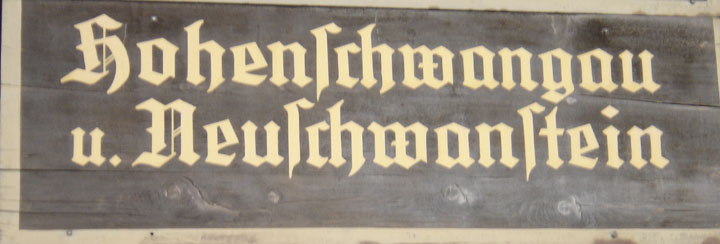
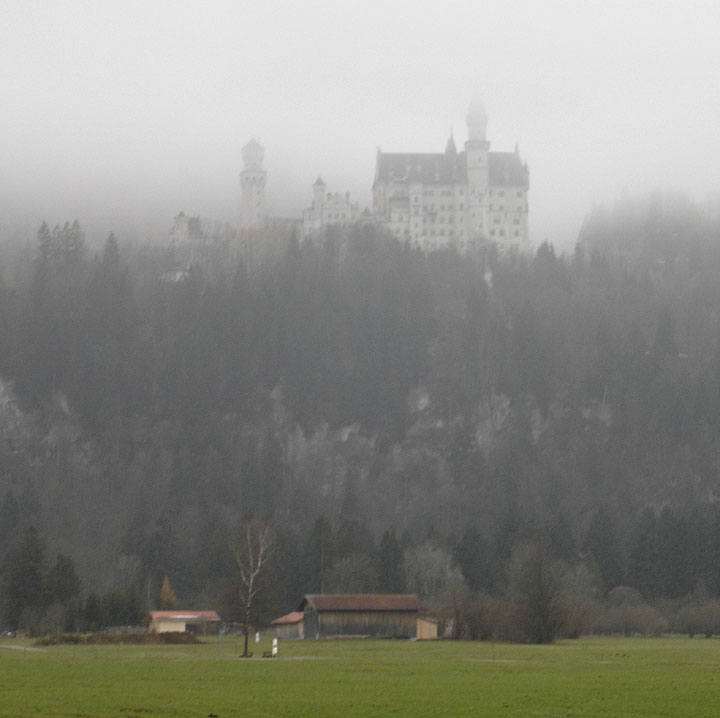
Neuschwanstein Castle above in the mist
Neuschwanstein Castle, royal palace in the Bavarian Alps of Germany, the most famous of three royal palaces built for Louis II of Bavaria, sometimes referred to as Mad King Ludwig, who grew up nearby at Hohenschwangau Castle. Begun in 1869 and left unfinished at Louis's death in 1886, the castle is the embodiment of 19th century romanticism. In a fantastical imitation of a medieval castle, Neuschwanstein is set with towers and spires and is spectacularly sited on a high point over the Pöllat River gorge. The king worked with three different architects in succession: Eduard Riedel, Georg Dollmann, and Julius Hofmann, all Germans who based their designs largely on a scheme produced by German stage designer Christoph Jank.
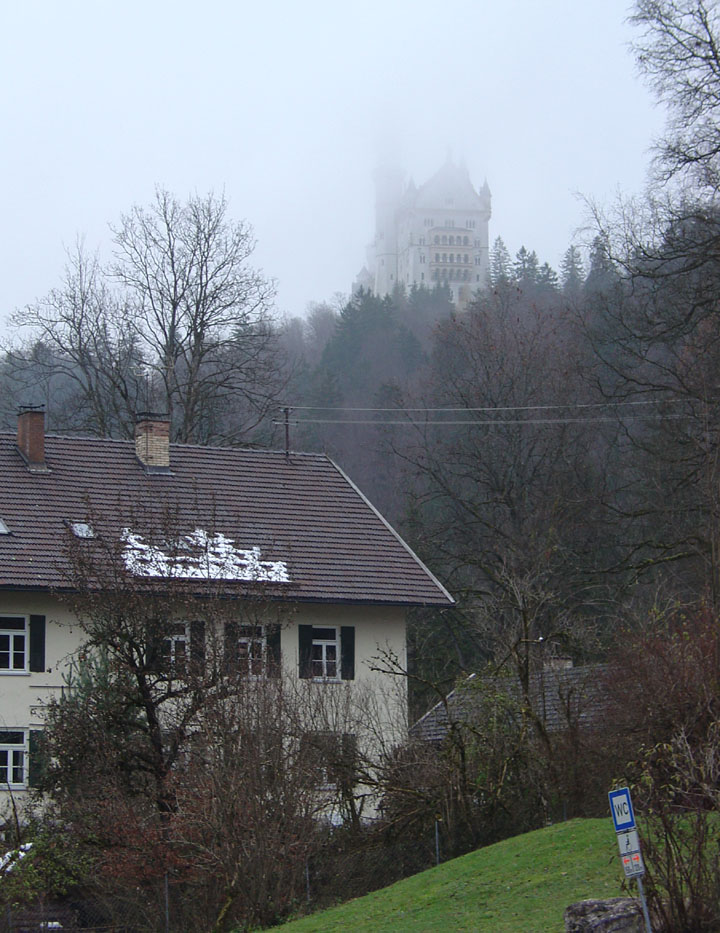
as seen from Hohenschwangau
King Louis was a patron of the German composer Richard Wagner, and the
third-floor rooms reflect Louis's love of the legends used by Wagner in his
operas: for Tannhäuser, a winter garden and stalactite grotto; for Lohengrin,
the great chamber; and the unfinished Byzantine throne room, its vaulted ceiling
supported by inlaid stone columns and decorated with stars. The Singers Hall on
the fourth floor, with a coffered ceiling, is dedicated to the life of Parsifal,
hero of another famous Wagner opera. The palace is now a popular tourist
attraction.
Text from Microsoft Encarta
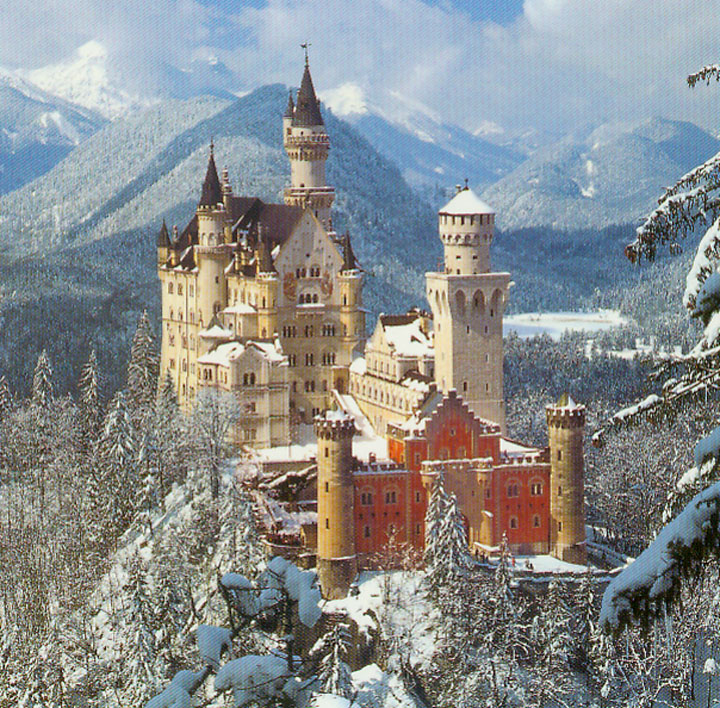
Winter post card

Fall postcard
the Town

Jägerhaus
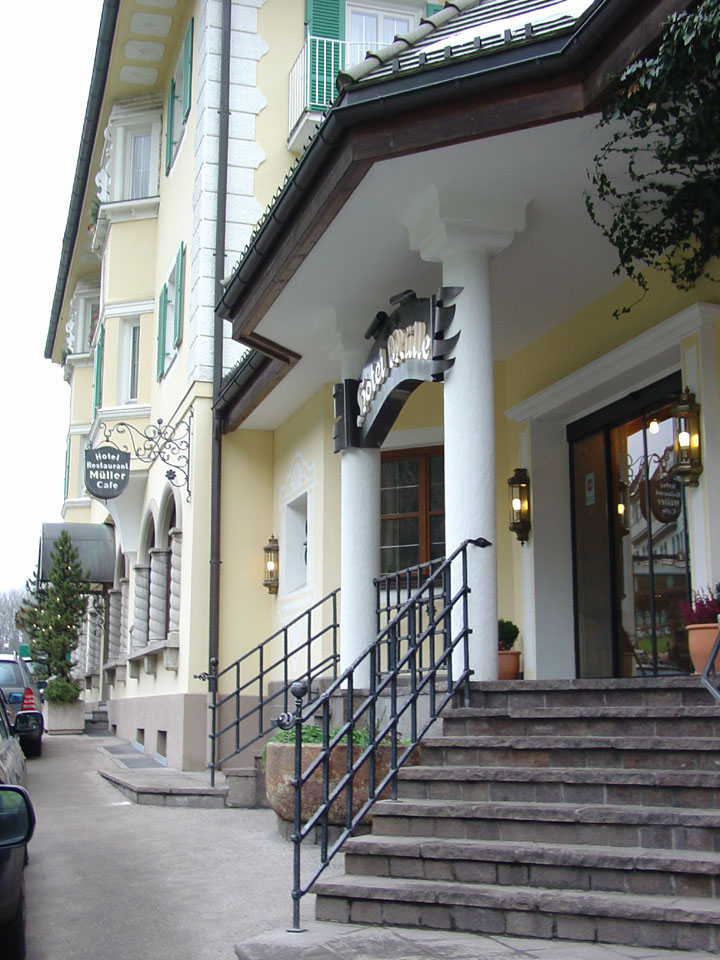
Muller Cafe
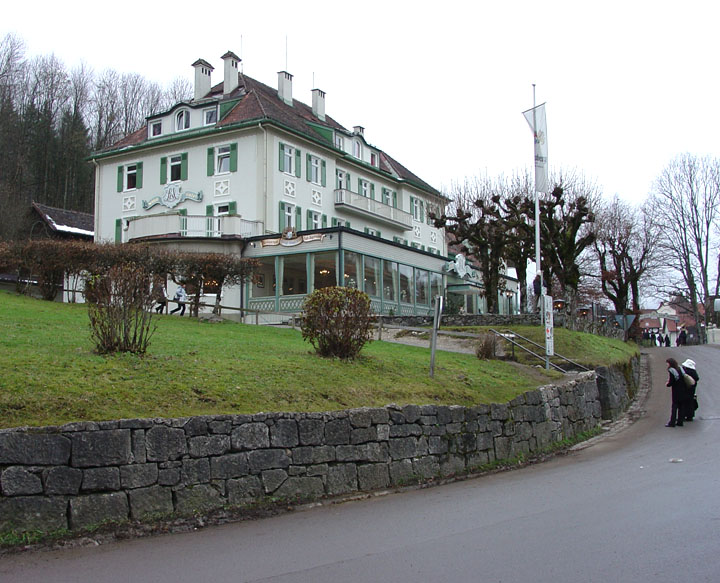
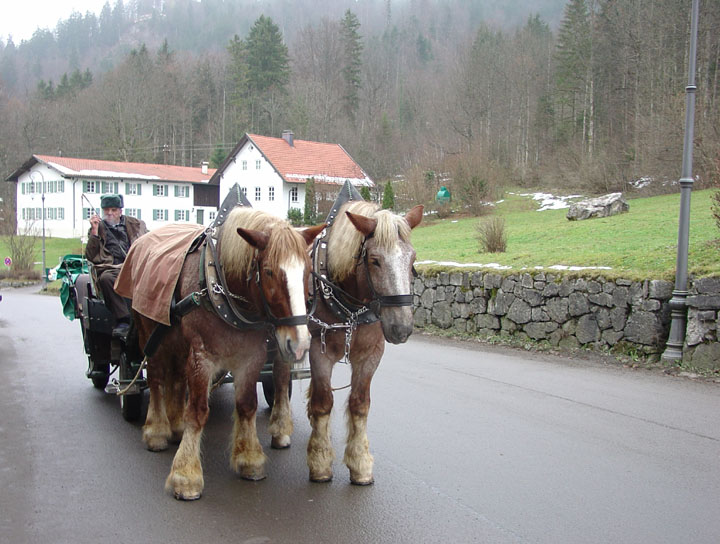
horse wagon to the castles
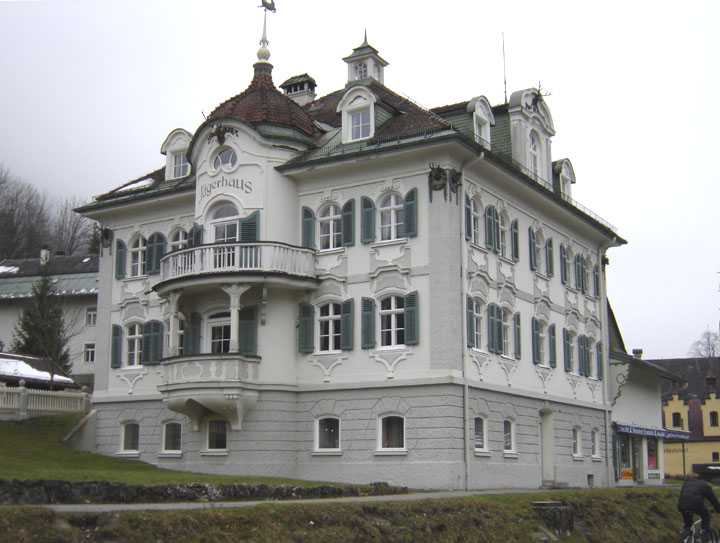
Jägerhaus
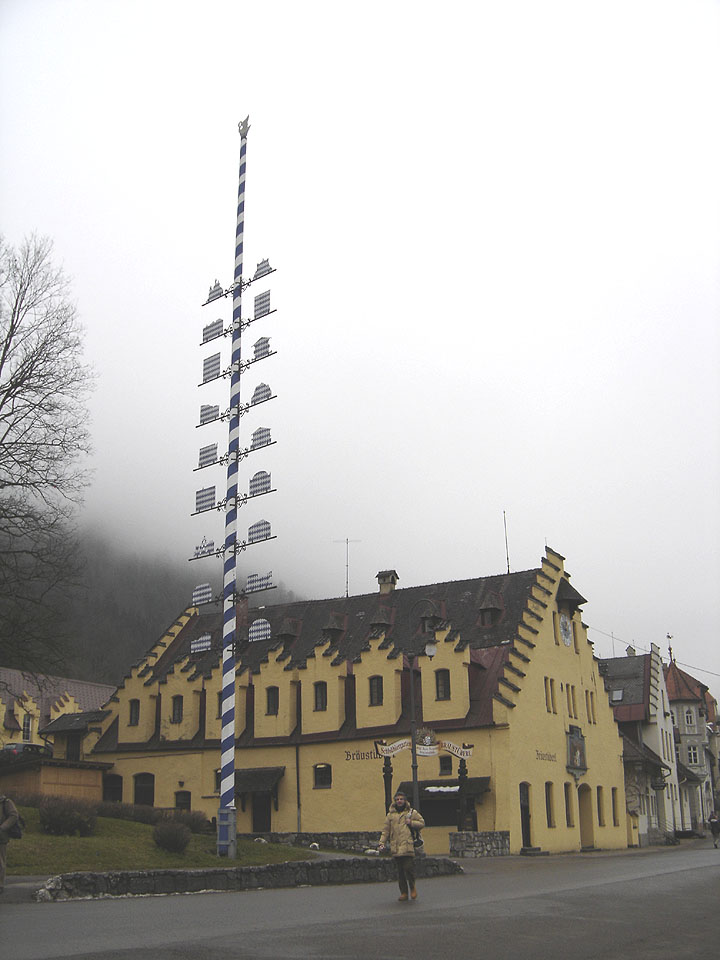
Bavarian pole
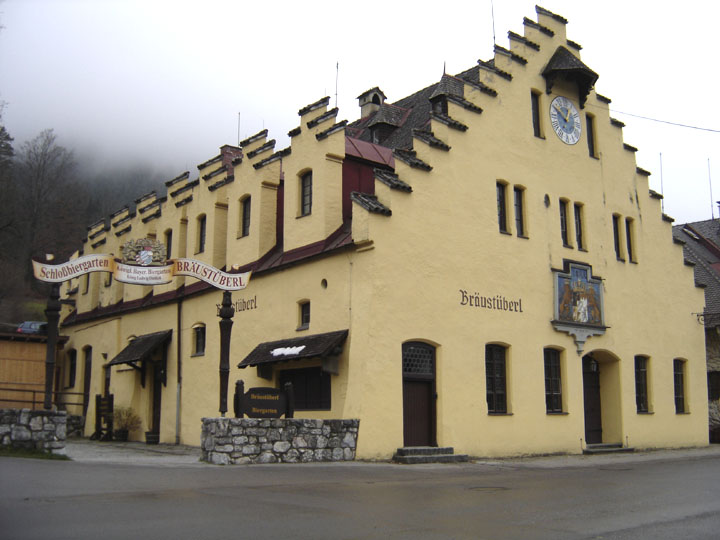
Beer Hall
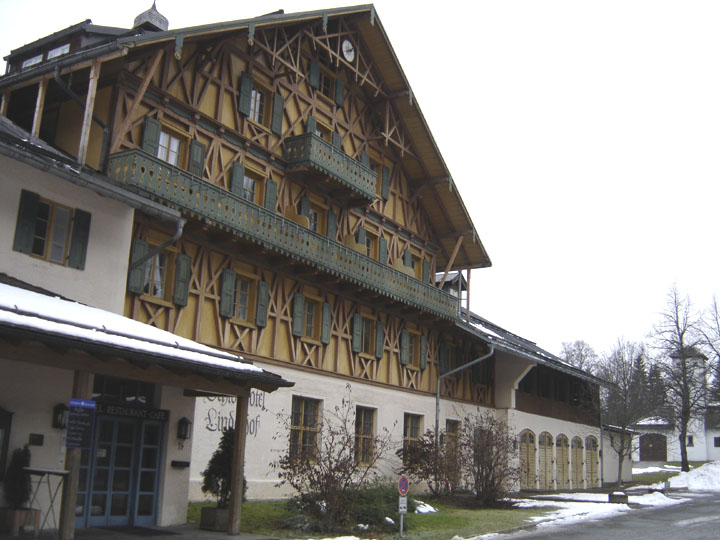
accommodation for the carriages
the Castle
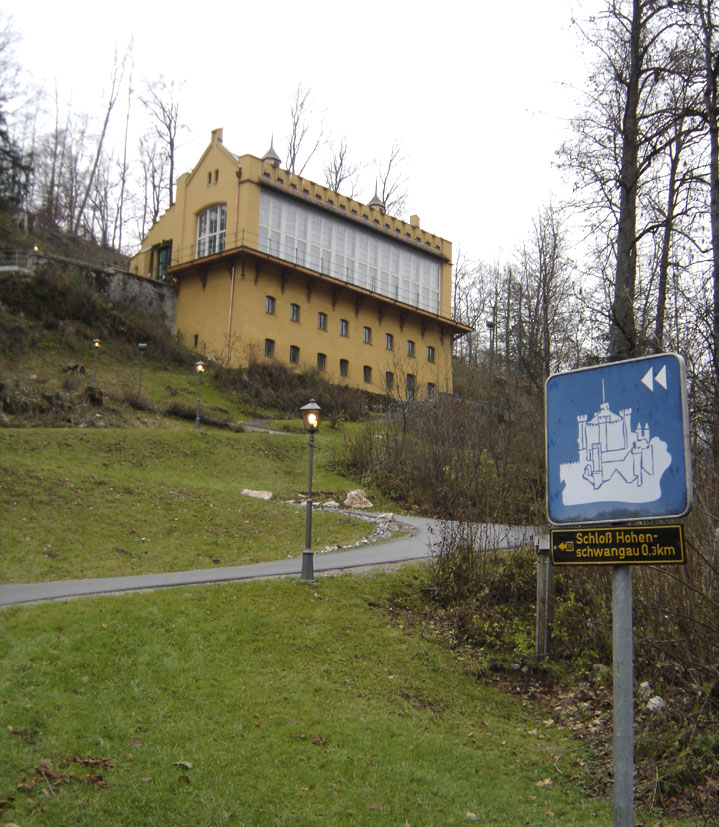
walkway to the Schloss
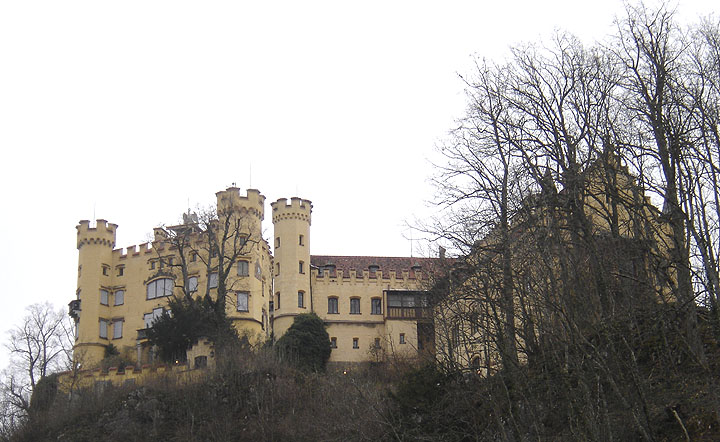
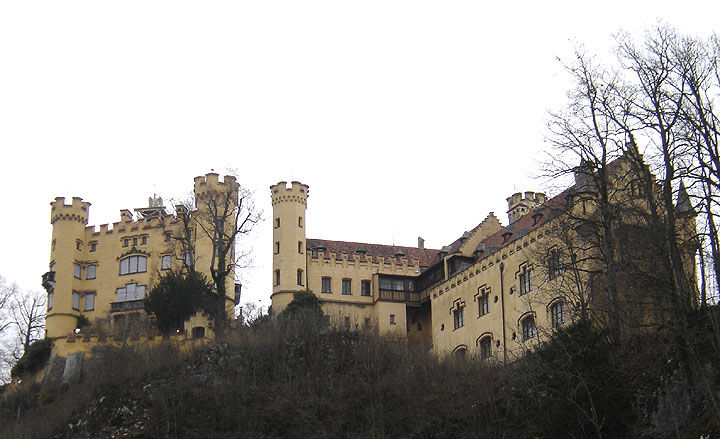
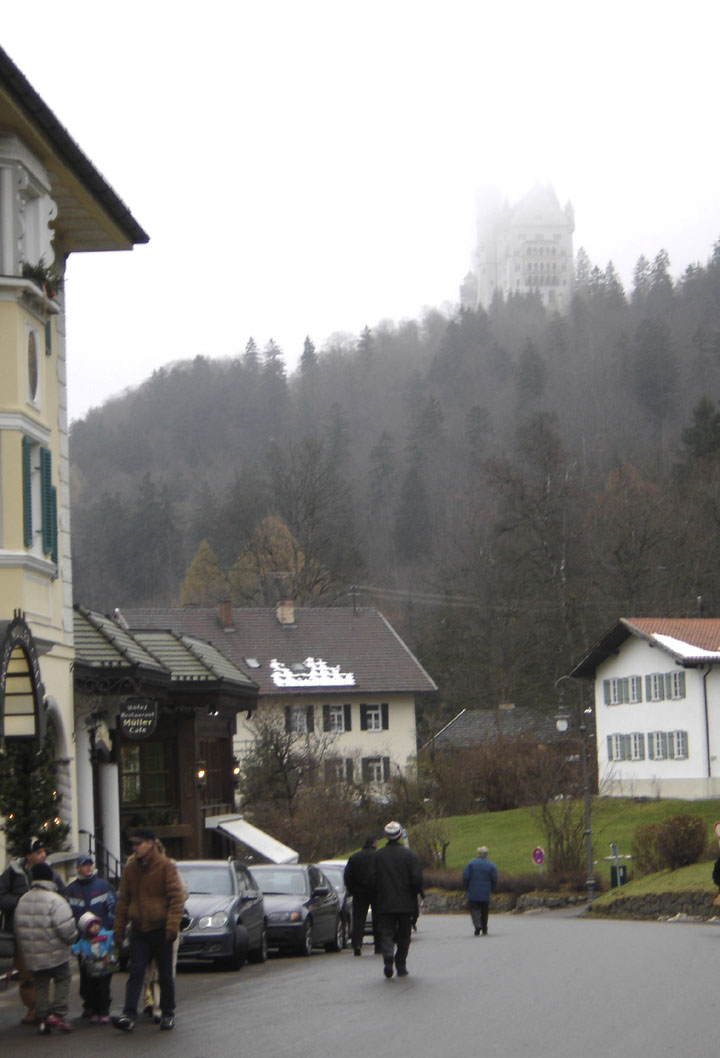
last look at Neuschwanstein in the
fog
from in front of the Muller Cafe